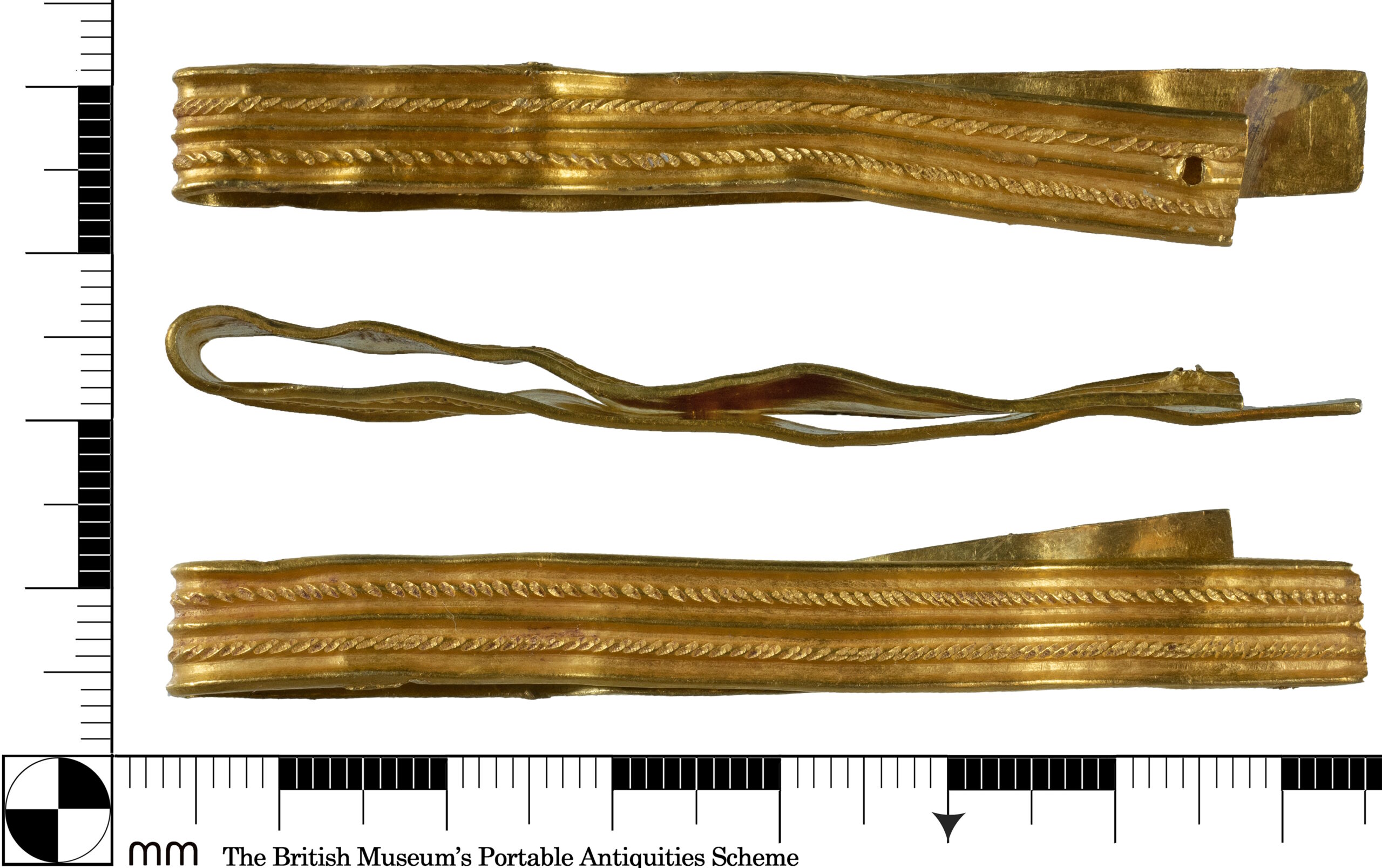 An 11-year-old boy discovered a rare gold Roman cuff bracelet in a field near Pagham in West Sussex, England. It is a decorated bracelet of the armilla type, awarded to Roman soldiers for valour, and dates to the 1st century A.D. As a gold object more than 300 years old, it has officially been declared treasure at a coroner’s inquest.
An 11-year-old boy discovered a rare gold Roman cuff bracelet in a field near Pagham in West Sussex, England. It is a decorated bracelet of the armilla type, awarded to Roman soldiers for valour, and dates to the 1st century A.D. As a gold object more than 300 years old, it has officially been declared treasure at a coroner’s inquest.
Rowan Brannan was walking the dog with his mother Amanda two years ago when he picked up a shiny yellow piece of metal. This is not unusual for Rowan. He likes to scout the ground for interesting things to pick up (don’t we all?), but his mother usually vetoes his pickups. This time he hung on to it, adamant that it was gold even when his mother told him it was probably just a gross old fragment of fence or something.
Once he got home, he researched how to determine if a metal is gold, and his find checked all the boxes. It probably wouldn’t have gone beyond the curiosity stage if a metal detecting friend of his mother’s hadn’t come over. She thought Rowan had something worth investigating and sent a picture to the leader of her metal detecting group. He suggested they report it to their local Finds Liaison Officer. Archaeologists examined the piece and confirmed it was real ancient Roman gold jewelry.
It is a large fragment of a bracelet 8.1 mm (.3 inches) wide and 71.3 mm (2.8 inches) long folded over. One of the folded sides is about 8 mm shorter than the other, so if it were unfolded it would be about 135 mm (5.3 inches) long. (There are some bends and waves so it’s not the straight measurement.) The total gold weight is 7.69 grams. It is decorated with five parallel bands, three plain ribs and two in rope style with the lines at opposite angles. One terminal end is pierced.
Several examples of copper-alloy Roman wide cuff bracelets have been found in Britain, but gold examples are far more rare. This is only the fourth recorded in the Portable Antiquities Scheme database. The gold ones are all slimmer than the base metal ones which are usually 12-22 mm, and with so few examples of them known, archaeologists are still not certain the gold ones actually were worn as cuff bracelets. Scholars believe the more valuable the metal, the higher the rank of the officer who was awarded it.
Amanda said the piece has been analyzed at the British Museum and has gone through the Coroner’s Court in a ‘fascinating’ process where they have been learning more and more about the bracelet.
She said: “It’s very exciting whenever we read an email and we have been kept up to date throughout the whole process.
“The Coroner’s Court emailed us and said ‘it’s been so lovely to deal with Rowan’s treasure’.”
